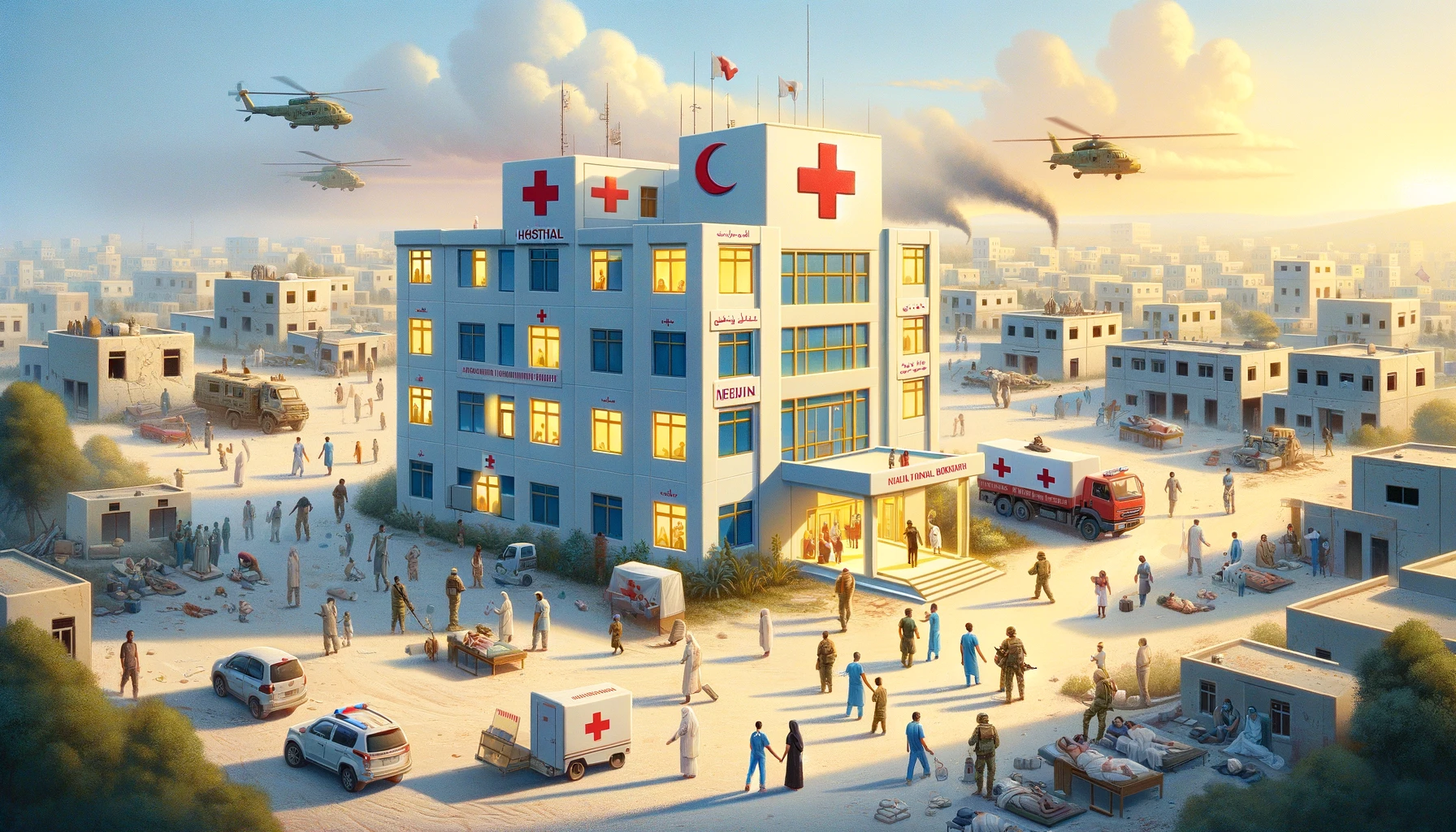
Protecting Hospitals in Armed Conflict: The Directives of International Humanitarian Law
Specific protections for wounded and medical personnel according to IHL standards during wars
In the context of tragic theaters of war, international humanitarian law (IHL) emerges as a beacon of civilization, offering protection to the defenseless and those working to provide relief and treatment. Health facilities and units, including hospitals, according to IHL, should not be subject to attack. This protection extends to the wounded and sick, as well as medical personnel and transportation vehicles used for medical care. The regulations have few exceptions, but what are the specific protections enjoyed by the wounded and sick in times of armed conflict?
General Rights and Protection of the Wounded
During armed conflict, care for the wounded and sick includes any individual, whether military or civilian, who requires medical attention and who is not or can no longer participate in hostilities. According to IHL, all wounded and sick people enjoy general rights to be:
- Respected: they should not be subjected to attack, killing or mistreatment
- Protected: they have the right to receive assistance and to be safeguarded from harm by third parties
- Sought and collected: the injured and sick must be sought out and rescued
- Cared for without distinction: must receive care without distinction based on any criteria other than medical criteria
IHL allows for research and assistance “to the extent possible,” that is, taking into account safety conditions and available means. However, lack of resources does not justify inaction. Even in cases where such resources are limited, state and non-state parties to a conflict must make best efforts to ensure medical care for the wounded and sick.
Specific Protection and Loss of Protection
The specific protection provided to medical personnel, medical units and establishments, and medical transport vehicles would be in vain if they were subject to attack. Therefore, IHL extends specific protections to these individuals; parties to the conflict must respect them while they are performing an exclusively medical function and must not unduly interfere with their work.
A medical institution may lose its protection granted by IHL if it is used to commit “acts harmful to the enemy.” If there is any doubt that medical units or establishments are being used in this way, it is presumed that they are not.
Compliance with International Law and Consequences
An action harmful to the enemy may make a medical institution or unit liable to attack; may seriously endanger the wounded and sick entrusted to their care; and may also engender distrust in the work of medical institutions, thereby diminishing the overall protective value of IHL.
Before bringing an attack against a medical institution that has lost its protected status, a warning must be issued, including, where appropriate, a time limit. The purpose of issuing a warning is to allow the harmful acts to cease or, if they persist, for the safe evacuation of the wounded and sick who are not responsible for such conduct.
Even in such cases, humanitarian considerations regarding the welfare of the wounded and sick cannot be ignored. Every effort must be made to ensure their safety.
Obligations of Parties in Conflict
The principle of proportionality remains binding on the attacking parties: the military advantage to be gained by attacking medical facilities that have lost their protected status must be carefully weighed against the likely humanitarian consequences of damaging or destroying such facilities. Additional measures should be taken to minimize the direct and indirect impact of such attacks on the health service whenever operationally feasible and relevant.
Respect for human life and safeguarding the rights of the wounded and health personnel during armed conflict remain absolute imperatives, guaranteed not only by ethical respect but also by the strict norms of international humanitarian law.


